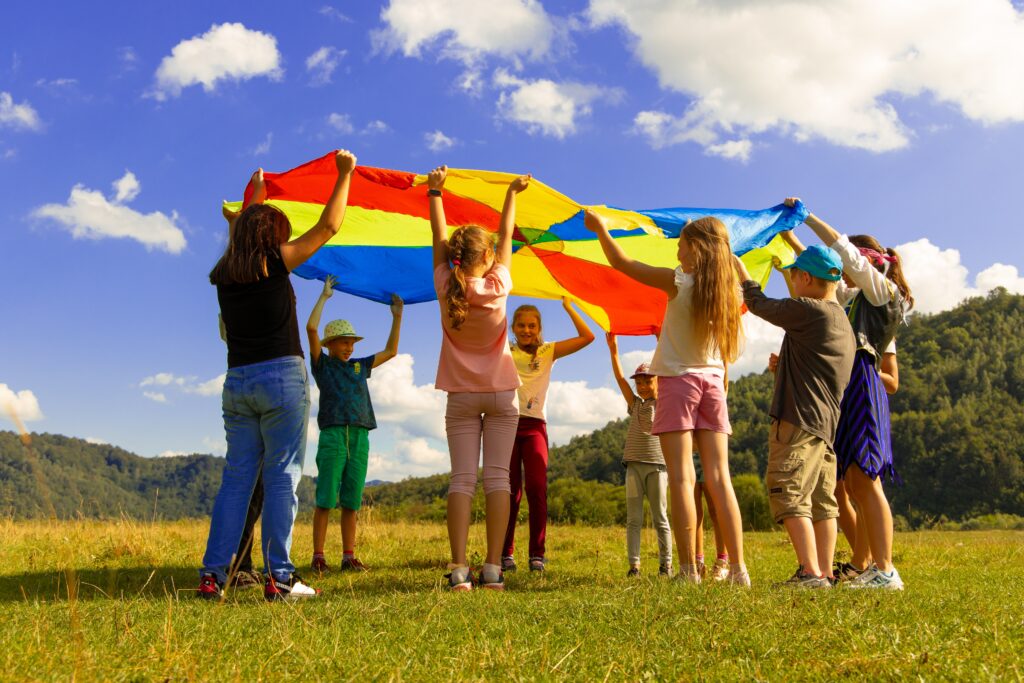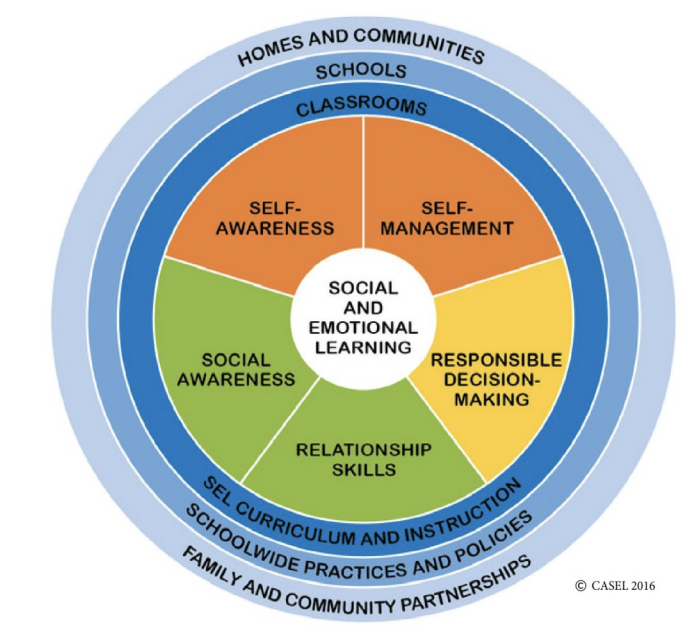
Introduction
If your sanctuary is interested in facilitating any kind of educational programming with local school groups, it’s important to be aware of their specific learning goals so you can tailor your programming to be more attractive to and suitable for them. Understanding their learning goals can greatly benefit you as you write school-based proposals, reach out, plan visits, and facilitate your programming. Learning goals can entail meeting specific academic standards such as the ability to understand a text read aloud or information presented orally, but they can also entail meeting certain social emotional learning (SEL) competencies, such as the ability to empathize with others and solve problems. Today, school groups all over the U.S. have adopted the SEL methodology as a way to help students develop certain social and emotional learning competencies in the classroom that, in turn, can help them become more self- and socially-aware citizens outside of the classroom. Whether you are already familiar with SEL competencies or not, we’ve written this resource to help sanctuary educators like you gain a better understanding of what SEL competencies are and how aligning them with your own organization’s goals can be a helpful way to attract local school groups to your programming.
What is Social and Emotional Learning (SEL)?
According to Collaborative for Academic, Social, Emotional Learning (CASEL), SEL is a methodology that aims to help students of all ages acquire and apply the knowledge, skills, and attitudes necessary to develop healthy identities, manage emotions, achieve personal and collective goals, feel and show empathy for others, establish and maintain supportive relationships, and make responsible and caring decisions. The skills learned within the SEL framework have been shown to help students engage in more prosocial behavior in and out of the classroom, avoid peer pressure to engage in harmful activities, cope better with emotional stress, solve problems, and achieve greater academic success, amongst other positive outcomes.
Today, 27 U.S. states use SEL competencies to establish K-12 learning standards, and all 50 U.S. states use SEL competencies to establish pre-K learning standards. To learn more about the SEL policies being implemented in your local community, go here.
The Five Core SEL Competencies

The SEL methodology includes five core competencies. These are: self-awareness, self-management, social awareness, relationship skills, and responsible decision-making. We’ve included a brief description of each competency from CASEL below. For a more detailed reading of them, please go here.
Self-awareness
The ability to accurately recognize one’s own emotions, thoughts, and values and how they influence behavior. The ability to accurately assess one’s strengths and limitations, with a well-grounded sense of confidence, optimism, and a “growth mindset.”
Social-awareness
The ability to take the perspective of and empathize with others, including those from diverse backgrounds and cultures. The ability to understand social and ethical norms for behavior and to recognize family, school, and community resources and supports.
Responsible decision-making
The ability to make constructive choices about personal behavior and social interactions based on ethical standards, safety concerns, and social norms. The realistic evaluation of consequences of various actions, and a consideration of the wellbeing of oneself and others.
Self-management
The ability to successfully regulate one’s emotions, thoughts, and behaviors in different situations — effectively managing stress, controlling impulses, and motivating oneself. The ability to set and work toward personal and academic goals.
Relationship skills
The ability to establish and maintain healthy and rewarding relationships with diverse individuals and groups. The ability to communicate clearly, listen well, cooperate with others, resist inappropriate social pressure, negotiate conflict constructively, and seek and offer help when needed.
Aligning Your Sanctuary’s Educational Programming with SEL Competencies
As you read through the five core social and emotional learning competencies, there’s a chance you’ll quickly recognize the abundance of ways they already align with so many of our learning objectives as sanctuary educators. The ability to take the perspective of and empathize with others? Check. The ability to accurately recognize one’s own emotions, thoughts, and values and how they influence behavior? Check. The ability to make constructive choices about personal behavior and social interactions based on ethical standards, safety concerns, and social norms? Check. The ability to establish and maintain healthy and rewarding relationships with diverse individuals and groups? Check, check, check! And so on and so forth.
In terms of implementing the social and emotional learning standards into your educational programming, there are several different approaches that you could take. For example, you might like to facilitate a formally designated portion of your sanctuary lesson or program devoted to one or more of the SEL competencies. Alternatively, you could make SEL a recurring theme throughout your entire sanctuary lesson or program. For tips on setting up a successful SEL-focused learning environment, we recommend checking out this resource from CASEL. These include fostering a supportive classroom climate that helps students to feel emotionally safe and providing the group with consistent opportunities to cultivate, practice, and reflect on social and emotional competencies in ways that are developmentally appropriate and culturally responsive.
Regardless of how you choose to incorporate SEL into your programming, it’s important to work with teachers and group leaders beforehand to find the most meaningful ways to integrate it. CASEL has created a group reflection protocol and worksheet to help educators think through this process. You can access that worksheet here.
OSP’s Sanctuary Education Lesson Plans and SEL Competencies
As of right now, the Open Sanctuary Project offers nine adaptable education lesson plans for sanctuaries interested in facilitating educational programming with K-12-aged kids, and they are all freely accessible and downloadable via our website! When we originally released these lesson plans, we did not align them with any particular SEL competencies since we wanted them to be as adaptable as possible. However, as time went on, we recognized the utility in aligning them with the five core social and emotional learning competencies since so many states currently utilize them, and determined this might be very helpful for a lot of busy sanctuary folks. As such, we began the process of revising our lesson plans to include SEL competencies and a few other elements that might make them more suitable for local school groups. To view the lesson plans we’ve revised thus far, check out Early Elementary Lessons One, Two, Three, and Four, as well as Middle School Lesson One. And please stay tuned – we’ll be releasing more soon!
As you scroll through the beginning of each of these revised lesson plans, you’ll see the learning objectives we’ve set for sanctuary educators as well as the social and emotional learning competencies that can be met in each plan. The competencies we include are not obligatory. They are simply there to help sanctuaries and local school groups who follow the SEL methodology see more clearly where both of their learning goals can align. For example, in Early Elementary Lesson Two, one of the social and emotional learning competencies listed is social awareness. That refers to the abilities to take others’ perspectives, demonstrate empathy and compassion, show concern for the feelings of others, and understand the influences of organizations and systems on behavior, amongst others. After being guided through a detailed observation of sanctuary caregiving staff providing responsible care for farmed animalsA species or specific breed of animal that is raised by humans for the use of their bodies or what comes from their bodies., Early Elementary Lesson Two offers students multiple opportunities to practice this SEL competency in the assessment’s imaginative role play, discussion activity, and reflective period that all take place in the latter half of the lesson.
Sources
Academic Standards and the U.S. Public Education System: Helpful Information for Animal Sanctuary Educators | The Open Sanctuary Project
Early Elementary Lesson One | The Open Sanctuary Project
Early Elementary Lesson Two | The Open Sanctuary Project
Early Elementary Lesson Three | The Open Sanctuary Project
Early Elementary Lesson Four | The Open Sanctuary Project
Middle School Lesson One | The Open Sanctuary Project
Social and Emotional Learning Competencies | CASEL
SEL Policy at the State Level | CASEL
SEL in the Classroom | CASEL








